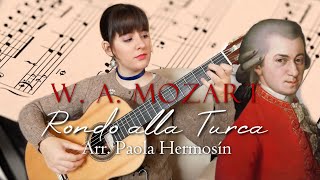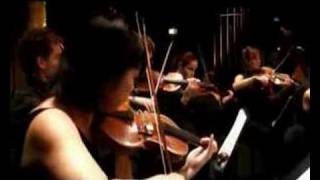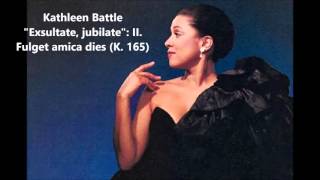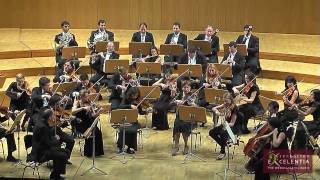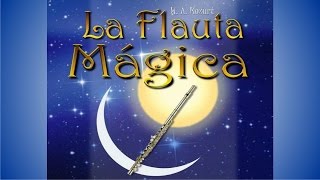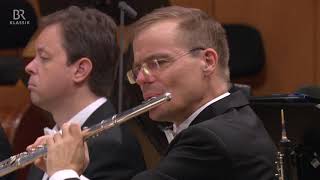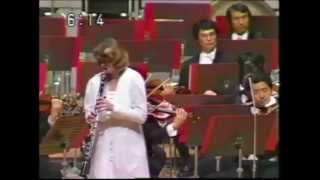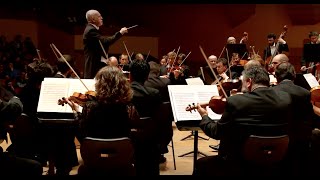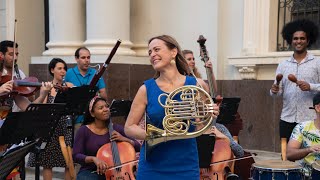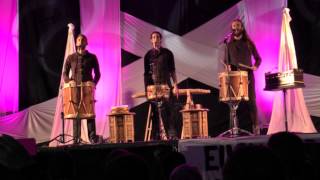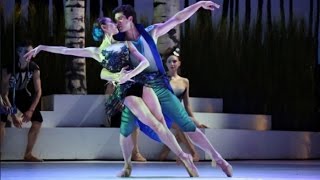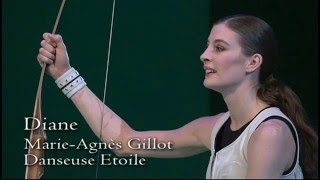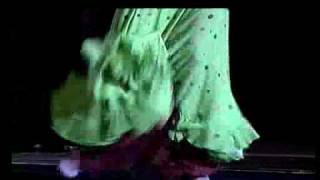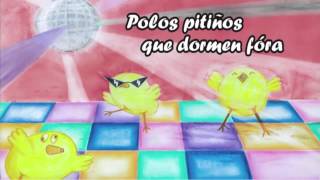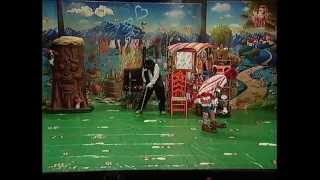On January 27, the births of Mozart and Arriaga are commemorated
Recommended music videos for initiation to classical music
Wolfgang Amadeus Mozart (1756-1791) is considered one of the three giants of musical composition along with Bach and Beethoven . Child prodigy born in Salzburg , Austria , at the age of six he mastered the keyboard and violin and began to compose; Taking advantage of these faculties, his father, Leopold , also a composer, exhibited him on exhausting tours of different European courts. At the age of seventeen he was hired as a musician at the court of Salzburg, but his restlessness led him to travel in search of a better position, always composing prolifically. During his visit to Vienna in 1781, after being dismissed from his position at court, he decided to settle in this city, where he achieved the fame he maintained for the rest of his life, despite going through difficult financial situations.
In his final years, he composed many of his best-known symphonies, concertos, and operas, as well as his Requiem . The circumstances of his early death have been the subject of much speculation and elevated to the level of myth. According to Nicholas Till and some other music historians and critics, Mozart always learned voraciously from other musicians and developed a splendor and maturity of style that ranged from light and elegance to darkness and passion. His influence on all subsequent Western music is profound; Ludwig van Beethoven wrote his first compositions in the shadow of Mozart , of whom Joseph Haydn wrote that "posterity will not see such talent again in a hundred years."
Eminently prolific composer (more than 600 works written from the age of five until his death) he cultivated all types of musical genres: piano works, chamber music, symphonies, concert works, choral works, operas... each and every one of them, masterpieces of their gender. His operas The Magic Flute, Don Giovanni, Cosí fan Tutte, and The Marriage of Figaro are among the 10 most performed operas in the world. Nor can we forget his Clarinet Concerto , or his Requiem , which are a regular part of the repertoire of the best orchestras. From 1769 to 1781 he worked for the Archbishop of Salzburg ; After the success of his opera Idomeneo de Crete , the doors of Vienna were opened to him, where he settled and achieved great fame that would accompany him until his death at the age of 35.
Paola Hermosín (1995) is a guitarist, singer, composer and writer from Alcala ( Seville ) who offers her music on all digital platforms, with more than 430,000 subscribers on her YouTube channel. She began her musical guitar studies at the García Matos Elemental Conservatory in Alcalá de Guadaíra at the age of 8, taught by Raquel Sanz . He continued at the Francisco Guerrero Professional Conservatory of Seville, obtaining an Honorary Award and finished at the Manuel Castillo Superior Conservatory of Seville with Honors and End of Degree Award, combining his musical studies with the Degree in Primary Education with a Musical Mention, finishing it with a brilliant record. , so he is also dedicated to teaching. Paola Hermosín completed the Master in Flamenco Research and Analysis in 2019 with the best grades.
Today he speaks to us and offers us his own guitar version of Mozart's Turkish March , popularly known as the third and last movement (“ Rondò Alla Turca: Allegretto”) of the Piano Sonata No. 11 . Their music imitates the sound of the Turkish Janissary bands, music that was very fashionable at the time. This is one of Mozart 's most listened to works and one of the most covered.
The serenade is a musical form conceived for an instrument or reduced instrumental ensemble, which can consist of one or several movements. It was an entertainment that achieved enormous popularity during the 18th century ; It was played at dusk, often outdoors, and was the delight of evenings in the gardens of the aristocrats' palaces. The term serenade comes from the Italian serena (evening) or al sereno (outdoors); That is to say, it is music to be performed outdoors and at dusk. The origin of the serenade is in the ballads that lovers sang at dusk in front of their beloved's windows. It is a musical genre that consists of several movements; In the 18th century , it consisted of up to ten movements.
The String Serenade No. 13 in G major K. 525, known as Eine kleine Nachtmusik (Little Night Serenade ), is one of Mozart 's most popular works and a clear example of the style of Classicism . It originally had five movements, of which only four have been preserved and of which today we will only see the first, Allegro . This movement masterfully illustrates the sonata form (exposition-development-reexposition), so emblematic of the classical period . Such is the clarity of this first movement, both in the writing and in the harmonic and structural approach, that it is a perfect example of the characteristics of the musical style of the late 18th century : pleasant, elegant, refined and transparent music.
Les Dissonances (The Dissonances) is a European classical music orchestra created in 2004 by the violinist David Grima l. The orchestra, which brings together French and European musicians, is made up of international soloists, musicians from prestigious orchestras and young talents.
Kathleen Battle is an American coloratura lyric soprano, born August 13, 1948, in Portsmouth , Ohio. She was initially known for her concert repertoire with the world's leading orchestras in the early and mid-1970s, making her opera debut in 1975. Battle expanded her repertoire with lyric soprano and coloratura soprano recordings during the 1980s and early His operatic career developed throughout the 1980s, with renowned conductors such as Herbert von Karajan, Riccardo Muti, Zubin Mehta, Seiji Ozawa, Claudio Abbado, Georg Solti, Carlo Maria Giulini Ohio, James Levine ... She participated in the New Year's Concert in Vienna on January 1, 1987 at the invitation of Karajan , the only time that the conductor conducted this event and the first time that a singer participated as a soloist. Although she no longer performs in operas, Battle remains active in concerts and recitals.
Aria , from the Italian aria ("air"), is a piece of music created to be sung usually by a solo voice without chorus, with orchestral accompaniment and as part of an opera or a zarzuela. In the past, it was any expressive melody often, although not always, performed by a singer.
Our video today: I (00:00) WA Mozart - Il Re Pastore - L'amero, saro constante (Kathleen Battle, Royal Philharmonic Orchestra, André Previn) .-. II (07:09) WA Mozart - Le nozze di Figaro - Porgi amor, qualche ristoro (Kathleen Battle, Metropolitan Opera Orchestra, James Levine) .-. III (11:23) WA Mozart - Zaide - Ruhe sanft, mein holdes Leben (Kathleen Battle, Metropolitan Opera Orchestra, James Levine) .-. IV (17:54) WA Mozart - Die Entführung aus dem Serail - Ach ich liebte (Kathleen Battle, Metropolitan Opera Orchestra, James Levine) .-. V (23:08) WA Mozart - Cosi fan tutte - Una donna a quindici anni (Kathleen Battle, Metropolitan Opera Orchestra, James Levine) .-. VI (26:35) WA Mozart - La clemenza di Tito - S'altro che lacrime (Kathleen Battle, Metropolitan Opera Orchestra, James Levine) .-. VII (29:28) WA Mozart - Don Giovanni - Vedrai, carino (Kathleen Battle, Metropolitan Opera Orchestra, James Levine) .-. VIII (33:14) WA Mozart - Die Zauberflöte - Ach, ich fühl's, es ist verschwunden (Kathleen Battle, Metropolitan Opera Orchestra, James Levine) .-. IX (37:16) WA Mozart - Die Zauberflöte - Bald prangt, den Morgen zu verkünden (Kathleen Battle, Metropolitan Opera Orchestra, James Levine) .-. 43:05
Juan Crisóstomo de Arriaga (1806 - 1826), known by many as the Basque Mozart , was born in Bilbao . His father, Juan Simón , came from Errigoiti , a town near Gernika where his mother, Maria Rosa, came from. The father, an organist from Berriatua (Bizkaia), moved to Bilbao to, like a good Errigigoitiarra, dedicate himself to the businesses with which he prospered and thus was able to promote the educational development of Juan Crisóstomo by sending him at only 15 years old to Paris to continue his studies. musicals that at the age of 3 had begun with him and continued with the violinist Faustino Sanz ; In Paris he would continue his violin studies as well as delve into harmony, counterpoint and composition.
He would soon attract the attention of his teachers, so the following year he was named professeur repetiteur of counterpoint and fugue. He died in Paris 10 days before his 20th birthday; After the sad event, a trunk with some of his personal belongings was sent to his parents' house. We can classify his musical legacy into two large sections: a) instrumental music and b) vocal music. In the first section we will highlight the Three String Quartets , the octet Nada y mucho , written at the age of 11, the Overture No. 1 and the Symphony in D. In the chapter of vocal music, he wrote several arias and cantatas as well as religious music and an opera, The Happy Slaves , written at the age of thirteen, of which only its overture survives.
Overture is the instrumental introduction to an opera or other dramatic work, musical or not; although some independent instrumental compositions of the 19th and 20th centuries were also called overtures by their composers. The first operas dating from the early 17th century did not have overtures; but there was an introduction made by the vocalists in which they summarized the action that was going to take place immediately afterwards. Instrumental introductions began to be commonly used in the mid- 17th century ; German composer Christoph Willibald Gluck was one of the first to use material from his operas for overtures. In this way, these established the emotional profile of the opera that followed.
The composition of the Overture to The Happy Slaves follows the French model, composed of two parts: a short and slow one in ternary rhythm and as an introductory one, and a second, fast, more developed part. The performance is offered to us by the Santa Cecilia Classical Orchestra conducted by its concertmaster Florian Donderer .
Recommended classical music videos
Mozart and Freemasonry . Freemasonry appeared in Europe at the end of the 17th century as a selective group of philanthropic nature, with a federal structure and with humanistic objectives, such as the search for truth, the study of human behavior, the sciences and the arts and the social and moral development of people and society; all of this based on a feeling of brotherhood, whose teachings are symbolized with elements of masonry. At the age of 28 , Mozart entered the Masonic Lodge of Vienna as an apprentice ; The following month he rose to the rank of Companion and four months later he was named Master Mason . Influenced by the Enlightenment , he pursued rationalism, although without joining the occult character of many of his companions.
Die Zauberflöte (The Magic Flute) is an opera that was premiered in Vienna conducted by Mozart himself two months before his death. The libretto was written by a fellow member of his Masonic lodge, Emanuel Schikaneder , with a plot that points to the struggle between good and evil, light and darkness, knowledge and ignorance; all approaches, fundamental in Masonic doctrine. A narrative full of Masonic symbology in the characters, in the action and even in the musical structures beginning with the first sounds of the orchestra: three orchestral touches that reflect the three touches that the Mason candidate makes on the door to request admission.
Franz Welser-Möst (1960) is an Austrian conductor born in Linz , Austria , who during his youth studied the violin and showed quite an interest in conducting. After being injured in a car accident, he gave up his violin studies and devoted himself completely to conducting studies. His debut took place at the Salzburg Festival in 1985. Since then he has held relevant positions such as: principal conductor of the London Philharmonic Orchestra , general director of the Zurich Opera , musical director (Generalmusikdirektor) of the State Opera of Vienna ...In 2011 and 2013 he conducted the Vienna Philharmonic orchestra in the New Year's Concert (Neujahrskonzert) and is currently the music director of the Cleveland Orchestra .
Symphony . The word symphony derives from the Latin symphonĭa and this, in turn, from the Greek συμφωνία (symphonía), which means "consonance" as opposed to διαφωνία (diaphōnia), which means "dissonance." In the Middle Ages and later, the word symphony was used to describe various instruments, especially those capable of producing more than one sound simultaneously in the sense of "sounding together." The word begins to appear in the titles of some works by composers of the 16th and 17th centuries; and by the end of the 18th century the word had already acquired the common meaning assigned to it today: a work that generally consists of several distinct sections or movements and composed most of the time for orchestra.
Symphony No. 41 , “Jupiter”, which we offer today, is the last symphony that Mozart composed. It seems that it was the music entrepreneur Johann Peter Salomon who added the epithet “ Jupiter ” to the symphony, implying that it had identical characteristics to that of the supreme and triumphant god. It consists of four movements, as was the usual custom of those times: I (0´3´´) ALLEGRO VIVACE .-. II (11´15´´) ANDANTE CANTABILE .-. III (23´12´´) MINUETTO: ALLEGRETTO .-. IV (27´32´´) MOLTO ALLEGRO.
The symphony is conducted by Simone Young , Australian conductor, who has been general director of the Australian Opera in Sydney , executive director of the Hamburg State Opera and principal conductor of the Philharmoniker Hamburg ; She has also been the first woman to conduct the Vienna Philharmonic and has recently been appointed music director of the Sydney Symphony Orchestra .
The Concerto is a musical form written for one or more solo instruments accompanied by an instrumental ensemble. It was Vivaldi who established the fundamental bases of its structure with three movements ( I fast-II slow-III fast ) and presented as a dialogue between the soloists and the instrumental ensemble. Starting from classicism, especially from the bases created by CPE Bach , the first movement is built following the patterns of the sonata form, while the second and third movements are built under various free and specific forms. Frequently, at the end of the first and/or third movement, the soloists have a cadence , often expressly written by the author with motifs from the same movement, with which they can show off their virtuosity.
The Clarinet Concerto in A major, K. 622 by Wolfgang Amadeus Mozart was composed in Vienna in 1791 for the clarinetist Anton Stadler , a great friend and Freemason brother of Mozart . Unlike all other Mozart concertos, this one does not provide a cadenza for the soloist in its first movement , but in the second (15'44''-- 16'07''). On the other hand, it is composed, like all concertos for soloists of the time, of three movements . I (0´19´´) ALLEGRO - Being the first movement it is in the key of the work: A major .-. II (12'20'') ADAGIO - As is the norm, this movement is in the subdominant key in relation to the main key of the work; that is, D major.- . III (18´45´´) RONDÓ - In the same key as the first movement, A major.
Sabine Meyer (1959), today's soloist, is a German classical clarinetist, who began playing the clarinet at a very young age. His first teacher was his father, also a clarinetist. He studied with Otto Hermann in Stuttgart , and then with Hans Deinzer at the Hannover Higher School of Music and Theater. She began her career as a member of the Bavarian Radio Symphony Orchestra , and the Berlin Philharmonic Orchestra , where she was one of the first female members. In addition to her work as a soloist, Sabine Meyer is a committed chamber music performer, and has performed all styles of classical music. Since 1993 she has been a professor at the Higher School of Music in Lübeck .
The Symphony in D minor , which we offer today, is one of the most paradigmatic and representative works of the artistic legacy of Juan Crisóstomo de Arriaga . The exact year of its composition dates back to 1824, when Arriaga was in France , in the middle of his Parisian period. As for the main key in which the symphony is composed, there are also doubts. In this case, following a reading by Víctor Estapé and Aurelio M. Seco , the Symphony is in the key of D minor , even though the introduction in D major may be misleading. The symphony is structured in four movements: I (0´30´´) ADAGIO. ALLEGRO VIVACE (3´39´´) .-. II (10´25´´) ANDANTE .-. III (18´50´´) MENUETTO: ALLEGRO .-. IV (23'05'') ALLEGRO WITH MOTORCYCLE.
Today's interpretation is offered to us by Jesús López Cobos (1940-2018), a Spanish conductor who had his first contacts with music as a member of the choir of the Malaga Cathedral ; His first studies were carried out at the Madrid Conservatory to continue them in Germany and New York . Throughout his career he was director of the Berlin Opera , the Cincinnati Symphony Orchestra , the Lausanne Chamber Orchestra and musical director of the Teatro Real in Madrid ; he directed different operas at La Scala in Milan , at Covent Garden in London , at the Paris Opera House and at the Metropolitan in New York ; As a guest conductor, he conducted the world's leading orchestras.
Recommended music videos for all tastes
Mambo is a musical rhythm and dance native to Cuba . The word “ mambo ” is an Afro-Blackism, similar to other African-American musical terms such as conga, milonga,bomba, tumba, samba, bamba, bambulá, tambo, tango, cumbé, cumbia and candombe , which denote an African origin, and particularly Congolese. The mambo was created in the late 1930s by the brothers Israel Cachao and Orestes López , when they were part of the Arcaño y sus Maravillas orchestra, accelerating the danzón and introducing a syncopation to the percussion.
Antonio Arcaño was the first to call a section of Cuban Danzón Mambo. It was Arcaño's cellist, Orestes López , who created the first Danzón called Mambo in 1938. In that piece some syncopated motifs, taken from the Son style, were combined with flute improvisations. Antonio Arcaño described the Mambo in the following way: “The mambo is a type of syncopated Montuno that has the rhythmic flavor of the Cuban, its informality and its eloquence. The pianist attacks the mambo, the flute hears it and is inspired, the violin executes a rhythm with double string chords, the bass adapts the “tumbao”, the timbalero rings with the cowbell, the güiro scratches and makes the sound of the maracas, the indispensable tumba corroborates the tumbao of the bass and strengthens the timpani.”
Sarah Willis (1969) is an American trumpet player who grew up in Maryland, Tokyo, Boston, Moscow and London . He began playing the French horn at age 14; At 22, he joined the Berlin State Opera and at 32, he joined the Berlin Philharmonic where he continues today. In 2017 he traveled to Cuba for the first time to teach a French horn master class, at which time he was captivated by the overflowing musicality of its inhabitants and the high technical preparation of its musicians; He returns three more times to give as many master classes; From this coexistence with Cuban musicians comes Mozart and Mambo , which is a musical selection that combines Mozart 's horn concertos with traditional Cuban music. The album was published in 2020 and also includes the Little Night Serenade in a mambo version.
And from the album, to the performance: Rondo alla Mambo! Inspired by the third movement of the third horn concerto K. 447, it is a flashmob (unusual performance by a group of people who suddenly appear and disappear) written by Joshua Davis and Yuniet Lombida Prieto that appears on the streets of Havana; The flashmob is performed by Sarah Willis and members of the Lyceum Orchestra of Havana as a culmination of the “ Mozart and Mambo ” experience.
Louis Armstrong (1901-1971), also known as Satchmo or Pops , was an American jazz trumpeter and singer. He is one of the most charismatic and innovative figures in the history of jazz and, probably, its most popular musician. Thanks to his musical skills and his brilliant personality, he transformed jazz from its initial status as dance music into a popular art form. Although at the beginning of his career he established his fame primarily as a trumpet player, later it would be his status as a vocalist that would establish him as an internationally recognized figure with enormous influence on jazz singing.
Kalakan is a Basque music group from Ipar Alde (South of France) composed of Jamixel Bereau, Xan Errotabehere and Pierre Sangla . It is characterized by its minimalist arrangements (voices, percussion) of the traditional Basque repertoire. After having collaborated and toured in Europe with pianists Katia and Marielle Labèque , the trio became widely known in 2012 during their world tour The MDNA Tour ; The tour they carry out with Madonna lasts seven months with more than 80 concerts throughout the Middle East, Europe, North America and South America . In Basque, Kalakan means "chatting"; The trio actually likes music that uses the Basque language.
Kalakan works a lot with the traditional Basque repertoire and proposes a contemporary reading of it, using, for example, the verse-chorus structure of pop or rock'n'roll . It is also inspired by the percussion techniques of traditional music groups such as: Dakha Brakha (Ukraine), Barbatuques (Brazil) or Berrogüetto (Galicia). The trio plays Basque percussion ( tambourine, txalaparta, tobera, ttun-ttun, atabal ), body percussion and fat handmade drums. Limiting the arrangements to percussion and vocals, the members of Kalakan want to return to the essence of the music: rhythm and melody. Thus, giving rhythm to old melodies or interpreting more recent songs a cappella , they mark a break in Basque singing that has been developing since the 70s in the Basque Country .
Elissa (1972), born in Lebanon to a Lebanese father and a Syrian mother, is one of the most recognized Arab singers. He began his career at age 20 by winning the silver medal of the Lebanese LBC competition; Later, in 1998, he released the single Baddi Doub , Arabic music fused with flamenco , whose success led him to participate in the 2000 Cannes Film Festival . He has received important recognition in Hollywood , London and in the Arab world.
Recommended peculiar videos
Il Giardino degli Amanti . It is a suite created by the Roman choreographer Massimiliano Volpini with fractions of Mozart 's compositions in which different characters from his works appear and dance the mysterious and intimate music to which they are invited.
Roberto Bolle (1975) is an Italian classical ballet dancer who has performed with the most renowned ballet companies in the world. In 2003 he received the title of étoile of the La Scala Theater and in 2009 principal dancer of the American Ballet Theatre .
Likewise, Nicoletta Manni (1991) is the prima ballerina of the La Scala Theater Ballet.
Léo Delibes (1836 -1891) was a French romantic composer. His mother was a musician and his grandfather was an opera singer. His nephew Frédéric was the paternal grandfather of the Spanish writer Miguel Delibes . He began his musical studies at the Paris Conservatory in 1847, where he was a student of Adolphe Adam . As a composer, he achieved true fame in 1870 with the success of his ballet Coppélia; Among his other ballets it is also worth highlighting Sylvia , written jointly with Léon Minkus ; The Pizzicato of this ballet is very popular, one of Delibes ' greatest hits. He also composed several operas and operettas, a mass, a cantata and occasional music for the theater, such as dances and ancient airs.
Sylvia , originally Sylvia ou La Nymphe de Diane ("Sylvia or the Nymph of Diana") is a ballet in three acts, with choreography by Louis Mérante and music by Léo Delibes , premiered on June 14, 1876 in Paris . Sylvia is a notable classical ballet, with some peculiarities that make it unique due to the mythological setting of Arcadia , its creative choreographies, its extensive scenography, its great influence on the arts and, above all, its notable score. When Sylvia premiered on June 14, 1876 at the Palais Garnier , it was widely ignored; It was with its recovery in 1952, with a new choreography by Sir Frederick Ashton , that it became popular.
Today we offer the entire ballet with Marie-Agnès Gillot, José Martínez and the Paris National Opera Ballet .
Belén Maya (1966) is a flamenco dancer who was born in New York in 1966, during a tour of her parents (both flamenco artists). At the age of 18 he began studying sevillanas, flamenco dance, classical Spanish dance, jazz and contemporary dance. Later she entered the Spanish National Ballet School and later, the Mario Maya Company where in three years she went from being a member of the ensemble to becoming the company's principal dancer . She spent six months in Tokyo and upon her return she was already the director of the Andalusian Dance Company . She worked with Carlos Saura on his world-renowned film, Flamenco . His latest work, Bipolar ', is an encounter between tradition and modernity in which he travels through the history of this dance.
Tango (“ por tangos” ) is a flamenco style with copla, with three or four eight-syllable verses. It is a happy and lively dance. It is considered one of the basic styles of flamenco, with various modalities existing, among which those from Granada, Cádiz, Triana or Jerez stand out. Some theories indicate that the origin of flamenco tango must be distributed between Cádiz and Seville , from where it spread its influence towards South America , where it crystallized in the later River Plate tango.
In a few minutes Gioconda Toscano explains this craftsmanship to us in a simple way.
Recommended music videos for children
Various Wikipedia articles have been used to write these texts.
The texts of Videomusicalis are written in Basque, Spanish and English.





